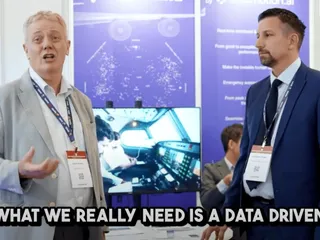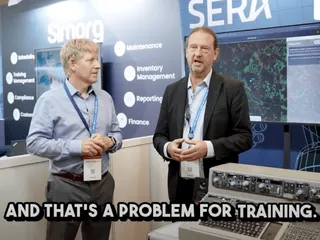HealthCare Simulation of South Carolina: a Functional Statewide Collaborative
Contact Our Team
For more information about how Halldale can add value to your marketing and promotional campaigns or to discuss event exhibitor and sponsorship opportunities, contact our team to find out more
The Americas -
holly.foster@halldale.com
Rest of World -
jeremy@halldale.com
John J. Schaefer, III, M.D., the Director of Medical University of South Carolina(MUSC)Simulation, describes the members’ successes in increasing simulation usage in that state.
The partners of HealthCare Simulation of South Carolina have increased the annual rate of simulation usage 20-fold in that state, reports John J. Schaefer, III, M.D., in his first of a two part article on the collaborative.
This is an invited two-part series about the simulation collaborative that has developed in South Carolina. In 2006 South Carolina’s three state universities established a collaborative and endowed chair to increase the utilization of simulation for the benefit of South Carolinian patients, students and healthcare workers. As of 2012, HealthCare Simulation of South Carolina has grown to include 10 collaborative and 20 affiliated partners. The ten collaborating partners in the past six years have provided over 80,000 student encounters involving over 200 faculty throughout the state and have developed over 300 active courses, conducted over 100,000 simulations to included over 60,000 center utilization hours. Through this collaborative the annual rate of simulation usage has increased twenty fold.
The first article will focus on the origin, development and infrastructure of the collaborative and its statewide office. Part two will focus on the specific educational and operational methodologies underlying the high volume, low cost simulation that has been a significant key to the success of the organization.
History
In the late 1990s and at the urging of state business leaders, state delegations visited the campuses and leaders at The University of Texas at Austin and the North Carolina Research Triangle in order to see the enormous positive economic impact that results from building a state’s knowledge base. These two trips resulted in the passage of the Research Centers of Economic Excellence Act by the South Carolina General Assembly in 2002 and the creation of the SmartState Program.
The SmartState Program creates the opportunity for our state’s three senior research institutions to recruit dozens of world-class scientists and engineers to the state and to work collaboratively in ways truly unprecedented. Rather than competing for resources, as is the national norm, South Carolina’s research institutions now work together to strengthen the state’s economy. Since 2003, $180 million has been appropriated from the State Education Lottery to establish unique Centers of Economic Excellence at the state’s three research institutions: Clemson, University of South Carolina (USC), and the Medical University of South Carolina (MUSC). The Review Board has awarded 49 Centers and 87 SmartState Endowed Chair positions. Each Center specializes in knowledge-based research fields such as engineering, nanotechnology, biomedicine, cancer research, and energy science. The SmartState Endowed Chairs secure private sector and federal grants to increase the state’s knowledge base and stimulate the economy. The SmartState Program is responsible for $1.2 billion in external investment in the state economy—a six-to-one return on the state’s investment of lottery proceeds (not tax dollars). The program also has resulted in the creation of nearly 7,000 jobs.
The Clinical Effectiveness and Patient Safety Center of Excellence (CEPSC) was established in 2006 to promote and increase the use of simulation education and training in South Carolina as part of the Health Sciences of South Carolina Centers of Economic Excellence Endowed Chairs Program. Healthcare Simulation South Carolina (HCSSC) is one of three endowed chair programs within the CEPSC. This program and endowed chair was located at the Medical University of South Carolina and began operations in the spring of 2006. Its offices are located in the MUSC Harborview office complex. John Schaefer, M.D., was recruited from the University of Pittsburgh, Peter M. Winter Institute for Education and Research (WISER) where he served as the founding director. The initial collaborative consisted of four sites including Medical University of South Carolina, Greenville Technical College and the Greenville Health System of which only the Greenville Technical College had an established simulation program.
Organization, Services and Products:
Collaboratives might originate for any number of reasons. In this case, the leadership at the various organizations interested in simulation realized that they lacked the internal expertise to build a successful simulation program and that there were “economy of scale” opportunities in accessing a central source of expertise in simulation. HealthCare Simulation of South Carolina (HCSSC), through the endowed chair program was established in 2006 at MUSC as two distinct divisions including the statewide collaborative office with its own staff and the MUSC HealthCare Simulation Center which is a 12,000 sq. ft. facility that serves MUSC. The center opened in 2008. Dr. Schaefer holds the Lewis Blackman Endowed Chair for Patient Simulation and Research and serves as the director for both divisions of HCSSC. It is through access to the products and services of the statewide office and by working with local thought leaders, to develop a successful simulation program to grow to serve their local missions using simulation.
The statewide collaborative office includes a staff of twelve people with simulation based expertise in the areas of administration, operations, course and scenario development, information technology, center design and project management. Organizationally HCSSC is divided into two service lines: the Collaborative Partner Services service line and the Collaborative Course and Scenario Development service line. Products and services offered to collaborative partners are based on a proven set of applied educational, operational and financial concepts collectively known as “Practical Simulation” methods. Practical Simulation is defined as the simulation process used (design, infrastructure, operations etc.) that allows large numbers of students to experience individual and group simulation exercises and to allow large numbers of teachers (facilitators) to be able to practically operate and use the wide range of simulator tools with limited technical training. Practical Simulation outlines the components to creating a value-based simulation center that includes quality standards for developing and delivering simulation activities, data collection and reporting. Each Practical Simulation component includes steps deliberately designed to economize and improve the efficiency and effectiveness of delivering simulation education.
The elements within the PS categories include:
- Strategic Planning
- Stakeholder education is required to support realistic planning decisions for simulation education use
- Create a Functional Center
- Facility Design and Development
- Staff Training and Development
- Information Technology Infrastructure and Support
- Simulation Equipment Support
- Economy of Scale
- Deliver Quality Courses
- General Support
- Faculty Development
- Simulation Activities
- Establish Value
- Data Collection
- Intellectual Property; and
- Communicate Value
- Research Collaboration and Support
Realizing that one of the significant barriers to having a successful simulation program is access to quality simulation curricula and scenarios; early on HCSSC surveyed its constituent partners as to desired training products in the domains of nursing and medical students, residency programs and hospital patient safety needs. As resources allowed, a range of courses and scenarios were developed based on practical simulation methods and offered to collaborative partners as part of the benefits of participation in the collaborative. Currently this includes access to over 800 scenarios accessed through the SimStore and over twenty Sharable Content Object Reference Model (SCORM)-formatted Internet curricula sets accessed through a password controlled Moodle delivery system.
A process for working with a potential partner from initial contact through established success was developed and is known as the “Early Success Program”. The components of the “Early Success Program’ program include a complete process for strategic planning, center design, curriculum integration, technology support, staffing plans, training and data collection for reporting value.
Economics
The statewide collaborative office was initially funded through grant support as one of the Smart State programs, and funding through two of the initial collaborative partners. It has moved towards a sustainability model based on internal revenue composed of endowment revenue and fees from all collaborative partners in return for valued products and services and external revenue composed variably of grants and licensing revenue. Currently about 70% of the annual costs are from internal revenue with 30% generated from external revenue. To support this economic model, a number of processes were put in place with the help of MUSC including; the formation of an LLC “SimTunes” to act as a commercial outlet for copyrighted simulation related curricula and scenarios; a standardized alternative copyright pathway within MUSC for copyrightable simulation materials; an inter-institutional agreement process to support collaborative partners participation in co-development and licensing; and a conflict of interest management program to protect the integrity of the institution and individuals.
In addition to the products and services provided to the collaborative partners from HCSSC, significant discounted costs for capital purchases and warranties were obtained and passed on to collaborative partners. Transparency of all costs and services are annually reported to all collaborative partners. Reported value, versus collaborative membership costs, to date has been quite favorable with over $3 million saved in direct costs to date. As part of the operational model offered to collaborative partners, ii includes the opportunity to provide services at a low unit cost (i.e., $60/hr/simulation room at MUSC simulation center). HCSSC has also played a central role in obtaining over $2 million in research related grants with its collaborative partners. Participation in the collaborative is renewed annually. To date no contracted collaborative member has withdrawn from the collaborative.
Lessons Learned & Future Directions
Simulation in healthcare is an immature market characterized by: limited general knowledge on how to develop successful local programs, lack of available simulation educational content and limited value statements and business models to support ongoing costs of operation. HealthCare Simulation of South Carolina and its collaborative of 10 partners and 20 affiliates have had some significant success in making simulation based education available for a wide range of users in South Carolina. The keys to this success have been: 1) high level leadership vision and support of the founding partners; 2) access to “practical simulation” expertise through the endowed chair program; 3) vision in establishing methods for external revenue to offset internal costs; 4) relatively rapid development of products and services; and 5) trust and transparency in pricing and financial disclosures. The products, services and processes of HCSSC did not appear over night. Personnel had to be hired and trained from scratch over a two-year period before a stable level of products and services was achieved and new development is continuous. Not all simulation programs in South Carolina participate in this collaborative though the collaborative is growing yearly.
The next article in this two part series will focus on the specific educational and operational principles that are generalized throughout the collaborative to help support high volume, high value, and low cost “practical simulation”.
About the Author
Dr. Schaefer has been involved in human simulation with manikin-based simulators since their introduction into medical education in the United States in the early 1990’s. He is a Professor in the Department of Anesthesia and Perioperative Medicine at the Medical University of South Carolina. He received a B.A. in Chemistry, B.S. in Chemical Engineering and a Doctorate of Medicine from West Virginia University from 1981 – 1988 respectively.


